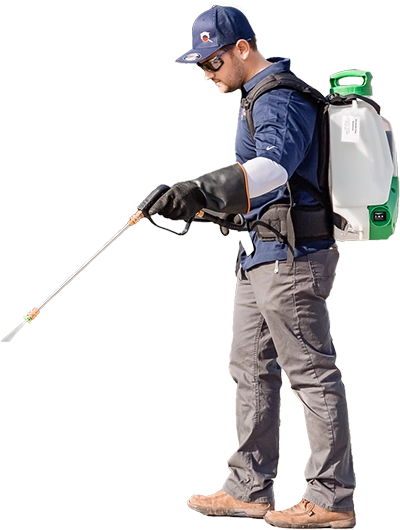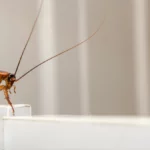Aphids are a type of soft-bodied pest which feed on plant sap. They are one of the most destructive plant pests, as they can stunt plant growth, produce galls, transmit plant viruses, and cause leaf and flower deformation. Aphids are found worldwide, but are most common in temperate regions like California.
An aphid infestation poses a major threat to plant and crop growth. Here is what you should know about aphids, and how you can go about eliminating them.
If you’re an avid gardener, you’ve probably come across aphids. They infest both crops and ornamental plants.
Aphids are tiny. Most are under ¼ inch and can be invisible to the naked eye. More than 4,000 aphid species exist, and aphids can be found in nearly every corner of the globe. Several species, like the soybean aphid, are especially widespread in North America.
They multiply quickly, owing to their speedy reproduction cycle—nymphs reach reproductive stage just one week after they’re born, and each aphid can produce five offspring per day for up to a month. Aphids are viviparous during the spring and summer, meaning they give birth to live young. During the cold months, they lay eggs which overwinter on host plants.
Aphids can appear white, black, gray, yellow, green, or even pink in color. A number of species appear waxy or wooly, as they secrete a waxy white or gray substance. Their body is pear-shaped with long antennae and long legs. One of their defining characteristics are two shorts tubes, or cornicles, which project like exhaust pipes from their rear.
Capable of passive dispersal, aphids can migrate great distances via strong winds. Some species are winged and have the mobility to fly to another host plant.
Most aphid species live in colonies, feeding on plant leaves, stems, and shoots.
Aphids are the least bit picky: you will find them on rose stems, tomato shoots, lettuce leaves, and everything in between. Plant damage is dependent upon the size of the infestation. Low numbers of leaf-feeding aphids cause little damage. But large populations can quickly turn leaves yellow and stunt plant growth.
Aphids are classified by the type of plant they feed on—for example, the apple aphid feeds only on apple trees, the soybean aphid on soybeans, the melon aphid on melons, and so on. They are not limited to crops, as they infect all types of landscape plants commonly found in at-home gardens. The rose aphid, for example, feeds on rose flowers.
All aphids release a sugary fluid, known as honeydew, which coats leaves, stems, and shoots. To secrete honeydew, they actually tap into a plant’s phloem duct. The phloem duct contains sugar rich sap. Honeydew often turns black and leads to sooty mold growth, a destructive, deadly plant fungus. Worse yet, some aphid species inject a toxin into the plant. The toxin makes leaves curl and diminishes growth.
Virus transmission is a major concern when dealing with an aphid infestation. Crops like potatoes, squash, beets, and pumpkin are often associated with aphid-transmitted diseases. Such viruses yellow and curl leaves and often result in plant death. Left untreated, entire crops can be decimated. Just one aphid can transmit a virus from plant to plant, and it can do so in the matter of minutes.
Below are some signs of aphid an infestation:
- Misshapen, curling, yellowed leaves.
- Sooty mold growth causing leaves to turn black.
- Deformed flowers or fruits.
- Unusually sticky leaves or stems. This is a sign of honeydew secretion.
- Galls that form on roots or leaves. Galls are abnormal, spherical growths.
Aphids have natural predators that keep their population in check, which is why it’s important to keep insecticide use to a minimum.
As is the case with all types of plants and pests, one must be careful when applying insecticides. Many times, an aphid infestation only becomes a problem after an insecticide has eliminated their natural predators. You don’t want to wipe out aphid parasitoids, a type of wasp that kills aphids. In fact, aphid parasitoids are most often found with aphid colonies, living with them for the sole purpose of keeping their populations under control!
For long-term aphid management, try to avoid broad spectrum insecticides. These include carbamates, organophosphate, and pyrethroids. Excess use of such chemicals will kill natural predators. Consider these non-chemical control methods:
- Prune away aphid-infected leaves.
- Spray water on plants to dislodge aphids. You can add a few ounces of dish soap to the water, but it’s not required.
- Douse plants with 1% insecticidal soap. It’s strong enough to eliminate aphids, but won’t threaten the wasps.
- Lightly dust plants with flour. Aphids don’t like it, but flour doesn’t hurt the plant or other insects.
- Apply diatomaceous earth (DE). It’s a non-toxic organic material known to kill aphids. Don’t use DE when plants are in full bloom, as it is also deadly to bees and other pollinators.
Aphids can do a lot of damage if their population gets out of hand. Luckily, natural predators usually keep them low in number. But that’s not always the case, so intervention may be needed. Whether you have an entire farm of crops or a front yard flower garden, keeping a close eye on your plants can go a long way in preventing major aphid damage.




